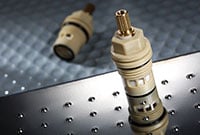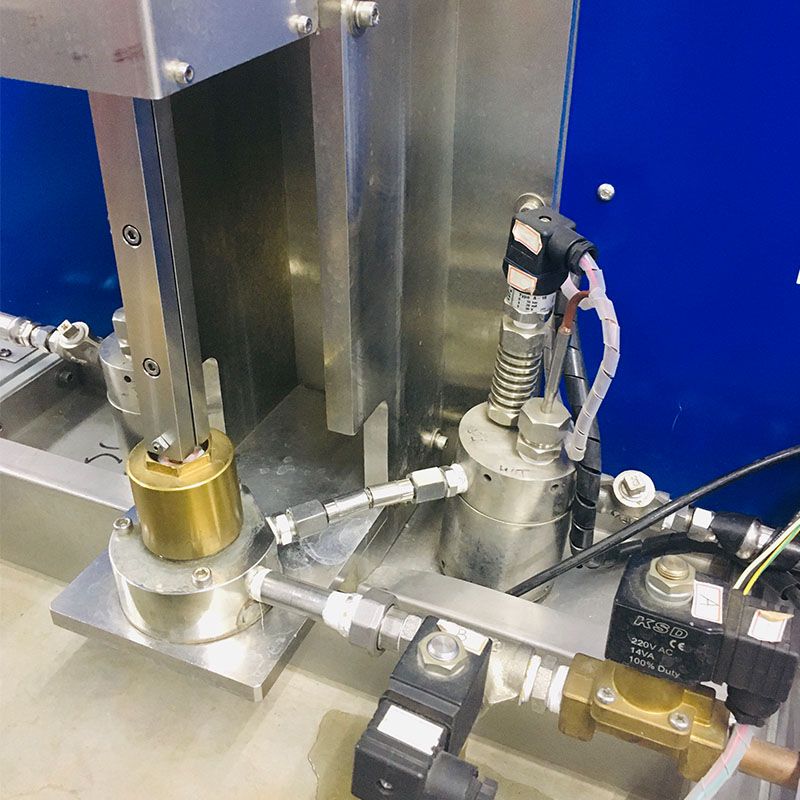Sensitivity
Sensitivity test is the accuracy of controlling temperature, and how to design the ceramic disc is the key to sensitivity. Although the temperature would be affected with the length of handle, in the stage of design, we put the water back flow and sealing area into consideration to ensure the high sensitivity. Especially between 34°C and 42°C, we have the best sensitivity than any other manufacturer in the world.
SENSITIVITY REQUIREMENT FOR EUROPEAN MARKET
According to the standard of EN817, which is most followed by European market, the test range of temperature is from 34°C to 42°C. This range is most frequently adopted by users. Except for the temperature, the water supply pressure is 0.3±0.02Mpa (3±0.2bar) and operate the handle by 0.5 degree per second, we record the variety details. When the temperature control device reaches the end of its movement, return the device to its starting position, and turn these records into the sensitivity curve.
From 34°C to 42°C,The minimum amplitude movement of basin/sink control device is 10mm; shower/bath control device is 12mm. Geann’s Single Level Cartridge provides 20° operational angle at 34°C to 42°C temperature range. Our Single Level Cartridge offers wide range for users to adjust temperature between 34°C to 42°C. It means users could fine-tuning the temperature they want by using Geann High Sensitivity Cartridge.
Press Release
 All Cartridges Complied to California AB100 Law
All Cartridges Complied to California AB100 LawGeann Cartridges and Valves are all complied to California AB100 Law. Our products are certified by both NSF International and IAPMO.
Read More 1/2 Half inch Faucet Plastic Cartridge
1/2 Half inch Faucet Plastic Cartridge1/2 Half inch Two Handle Faucet Plastic Ceramic Cartridge for Faucet, Basin Application.
Read More Pressure Balance Valve With Diverter
Pressure Balance Valve With DiverterPressure Balance Valve With Diverter for Anti-Scald and Shower Application.
Read More

